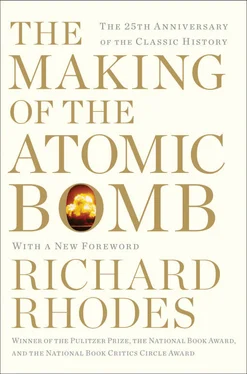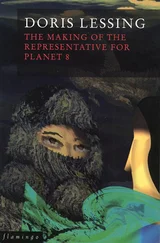Before he left the United States for Leiden Oppenheimer visited the Sangre de Cristos with Frank. The two brothers found a cabin and a piece of land they liked—“house and six acres and stream,” in Robert’s terse description—up high on a mountain meadow. 482The house was rough-hewn timber chinked with caulk; it lacked even a privy. While Robert was in Europe his father arranged a long-term lease and set aside three hundred dollars for what Oppenheimer calls “restoration.” A summer in the mountains was restoration for the celebrated young theoretician as well.
* * *
At the end of that summer of 1927 the Fascist government of Benito Mussolini convened an International Physical Congress at Como on the southwestern end of fjord-like Lake Como in the lake district of northern Italy. The congress commemorated the centennial of the death in 1827 of Alessandro Volta, the Como-born Italian physicist who invented the electric battery and after whom the standard unit of electrical potential, the volt, is named. Everyone went to Como except Einstein, who refused to lend his prestige to Fascism. 483Everyone went because quantum theory was beleaguered and Niels Bohr was scheduled to speak in its defense.
At issue was an old problem that had emerged in a new and more challenging form. Einstein’s 1905 work on the photoelectric effect had demonstrated that light sometimes behaves as if it consists not of waves but of particles. Turning the tables, early in 1926 an articulate, cultured Viennese theoretical physicist named Erwin Schrödinger published a wave theory of matter demonstrating that matter at the atomic level behaves as if it consists of waves. Schrödinger’s theory was elegant, accessible and completely consistent. Its equations produced the quantized energy levels of the Bohr atom, but as harmonics of vibrating matter “waves” rather than as jumping electrons. Schrödinger soon thereafter proved that his “wave mechanics” was mathematically equivalent to quantum mechanics. “In other words,” says Heisenberg, “…the two were but different mathematical formulations of the same structure.” 484That pleased the quantum mechanicists because it strengthened their case and because Schrödinger’s more straightforward mathematics simplified calculation.
But Schrödinger, whose sympathies lay with the older classical physics, made more far-reaching claims for his wave mechanics. In effect, he claimed that it represented the reality of the interior of the atom, that not particles but standing matter waves resided there, that the atom was thereby recovered for the classical physics of continuous process and absolute determinism. In Bohr’s atom electrons navigated stationary states in quantum jumps that resulted in the emission of photons of light. Schrödinger offered, instead, multiple waves of matter that produced light by the process known as constructive interference, the waves adding their peaks of amplitude together. “This hypothesis,” says Heisenberg dryly, “seemed to be too good to be true.” 485For one thing, Planck’s quantized radiation formula of 1900, by now exhaustively proven experimentally, opposed it. But many traditional physicists, who had never liked quantum theory, greeted Schrödinger’s work, in Heisenberg’s words, “with a sense of liberation.” 486Late in the summer, hoping to talk over the problem, Heisenberg turned up at a seminar in Munich where Schrödinger was speaking. He raised his objections. “Wilhelm Wien, [a Nobel laureate] who held the chair of experimental physics at the University of Munich, answered rather sharply that one must really put an end to quantum jumps and the whole atomic mysticism, and the difficulties I had mentioned would certainly soon be solved by Schrödinger.” 487
Bohr invited Schrödinger to Copenhagen. The debate began at the railroad station and continued morning and night, says Heisenberg:
For though Bohr was an unusually considerate and obliging person, he was able in such a discussion, which concerned epistemological problems which he considered to be of vital importance, to insist fanatically and with almost terrifying relentlessness on complete clarity in all arguments. He would not give up, even after hours of struggling, [until] Schrödinger had admitted that [his] interpretation was insufficient, and could not even explain Planck’s law. Every attempt from Schrödinger’s side to get round this bitter result was slowly refuted point by point in infinitely laborious discussions. 488
Schrödinger came down with a cold and took to his bed. Unfortunately he was staying at the Bohrs’. “While Mrs. Bohr nursed him and brought in tea and cake, Niels Bohr kept sitting on the edge of the bed talking at [him]: ‘But you must surely admit that…’” 489Schrödinger approached desperation. “If one has to go on with these damned quantum jumps,” he exploded, “then I’m sorry that I ever started to work on atomic theory.” Bohr, always glad for conflicts that sharpened understanding, calmed his exhausted guest with praise: “But the rest of us are so grateful that you did, for you have thus brought atomic physics a decisive step forward.” 490Schrödinger returned home discouraged but unconvinced.
Bohr and Heisenberg then went to work on the problem of reconciling the dualisms of atomic theory. Bohr hoped to formulate an approach that would allow matter and light to exist both as particle and as wave; Heisenberg argued consistently for abandoning models entirely and sticking to mathematics. In late February 1927, says Heisenberg, both of them “utterly exhausted and rather tense,” Bohr went off to Norway to ski. 491The young Bavarian tried, using quantum-mechanical equations, to calculate something so seemingly simple as the trajectory of an electron in a cloud chamber and realized it was hopeless. Facing that corner, he turned around. “I began to wonder whether we might not have been asking the wrong sort of question all along.”
Working late one evening in his room under the eaves of Bohr’s institute Heisenberg remembered a paradox Einstein had thrown at him in a conversation about the value of theory in scientific work. “It is the theory which decides what we can observe,” Einstein had said. 492The memory made Heisenberg restless; he went downstairs and let himself out—it was after midnight—and walked past the great beech trees behind the institute into the open soccer fields of the Faelledpark. It was early March and it would have been cold, but Heisenberg was a vigorous walker who did his best thinking outdoors. “On this walk under the stars, the obvious idea occurred to me that one should postulate that nature allowed only experimental situations to occur which could be described within the framework of the [mathematical] formalism of quantum mechanics.” 493The bald statement sounds wondrously arbitrary; its test would be its consistent mathematical formulation and, ultimately, its predictive power for experiment. But it led Heisenberg immediately to a stunning conclusion: that on the extremely small scale of the atom, there must be inherent limits to how precisely events could be known. If you identified the position of a particle—by allowing it to impact on a zinc-sulfide screen, for example, as Rutherford did—you changed its velocity and so lost that information. If you measured its velocity—by scattering gamma rays from it, perhaps—your energetic gamma-ray photons battered it into a different path and you could not then locate precisely where it was. One measurement always made the other measurement uncertain.
Heisenberg climbed back to his room and began formulating his idea mathematically: the product of the uncertainties in the measured values of the position and momentum cannot be smaller than Planck’s constant. So h appeared again at the heart of physics to define the basic, unresolvable granularity of the universe. What Heisenberg conceived that night came to be called the uncertainty principle, and it meant the end of strict determinism in physics: because if atomic events are inherently blurred, if it is impossible to assemble complete information about the location of individual particles in time and space, then predictions of their future behavior can only be statistical. The dream or bad joke of the Marquis de Laplace, the eighteenth-century French mathematician and astronomer, that if he knew at one moment the precise location in time and space of every particle in the universe he could predict the future forever, was thus answered late at night in a Copenhagen park: nature blurs that divine prerogative away.
Читать дальше












